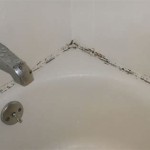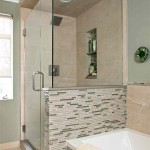Where to Vent a Basement Bathroom Exhaust Fan
Proper ventilation is crucial for any bathroom, especially one located in a basement. A well-vented bathroom exhaust fan effectively removes excess moisture, preventing mold growth, mildew, and structural damage. Venting a basement bathroom fan correctly requires careful consideration to ensure optimal performance and prevent potential problems.
Key Considerations for Basement Bathroom Exhaust Fan Venting
Several factors influence the best venting location for a basement bathroom exhaust fan. These factors include local building codes, the layout of the basement, and the overall structure of the house.
Venting Through the Roof
Venting a basement bathroom exhaust fan through the roof is generally considered the most effective method. This approach allows for a shorter vent run, minimizing back pressure and maximizing airflow. It also prevents moisture from being trapped within the house's structure.
Venting Through an Exterior Wall
Venting through an exterior wall is another viable option, particularly if roof access is difficult or impractical. However, it's essential to choose a location that minimizes the vent's length while ensuring proper clearance from windows, doors, and other openings.
Venting Through a Soffit
Venting through a soffit is generally discouraged. While seemingly convenient, this method can trap moisture in the attic or soffit space, leading to potential problems like wood rot and insulation damage.
Venting into a Dryer Vent
Venting a bathroom exhaust fan into a dryer vent is strictly prohibited. Combining these two exhaust systems can create a dangerous situation, potentially forcing dryer exhaust back into the house. This can lead to a buildup of carbon monoxide and other harmful gases.
Venting into Crawl Spaces or Attic Spaces
Venting into a crawl space or attic is not recommended. Similar to venting into a soffit, this practice can trap moisture within these enclosed spaces, creating ideal conditions for mold growth and structural damage.
Importance of Proper Ductwork
Regardless of the chosen venting location, using appropriate ductwork is paramount. Smooth-walled, rigid metal or PVC ducts are preferred over flexible ductwork. Flexible ducts are prone to kinks and bends, which restrict airflow and reduce the efficiency of the exhaust fan. Additionally, smooth ducts minimize moisture buildup and resist mold growth.
Understanding Back Pressure and Airflow
Back pressure, the resistance to airflow within the ductwork, significantly impacts the fan's performance. Long duct runs, sharp bends, and improper duct materials can increase back pressure, reducing the fan's effectiveness. Minimizing the length of the duct run and using appropriate duct materials are crucial for optimal airflow and ventilation.
Meeting Building Code Requirements
Adhering to local building codes is mandatory when installing or modifying a bathroom exhaust fan. Building codes specify requirements for duct materials, vent termination locations, and other crucial aspects of the installation process. Consulting with a qualified contractor or building inspector is essential to ensure compliance with all applicable regulations.
Choosing the Right Exhaust Fan
Selecting the appropriate exhaust fan is crucial for effective ventilation. The fan's capacity, measured in cubic feet per minute (CFM), should be suitable for the bathroom's size. Larger bathrooms require fans with higher CFM ratings to effectively remove moisture and odors. Refer to manufacturer recommendations and building codes for guidance on selecting the correct fan size.
Importance of Professional Installation
While some homeowners may be tempted to tackle this project themselves, professional installation is highly recommended. Experienced contractors possess the expertise and knowledge to navigate complex venting situations, ensure proper ductwork installation, and meet all building code requirements. Professional installation ensures the system's longevity and optimal performance.
Regular Maintenance and Inspection
Regular maintenance is essential for maintaining the efficiency of the bathroom exhaust fan. Cleaning the fan blades and housing periodically helps to remove dust and debris that can impede airflow. Inspecting the ductwork for leaks or damage is also crucial for preventing moisture buildup and ensuring proper ventilation.
Preventing Moisture Problems
Effective bathroom exhaust fan ventilation plays a vital role in preventing moisture-related issues in the basement. By removing excess humidity, the fan helps prevent mold growth, mildew, and structural damage caused by moisture accumulation. Proper ventilation also contributes to a healthier and more comfortable indoor environment.
Energy Efficiency Considerations
Choosing an energy-efficient exhaust fan can help reduce energy consumption and lower utility bills. Look for fans with Energy Star certification, which indicates they meet specific energy efficiency standards. Additionally, using timers or humidity sensors can further optimize energy usage by operating the fan only when necessary.

Invisible Ventilation For A Better Bath Fine Homebuilding

Venting A Bath Fan In Cold Climate Fine Homebuilding

Installing An Exhaust Fan During A Bathroom Remodel Greenbuildingadvisor

Best Practices Bathroom Venting Greenbuildingadvisor

How To Vent A Basement Bathroom With No Outside Access

Venting A Basement Bathroom Fan Outside

How To Install A Bathroom Fan In Basement

How To Vent A Bathroom With No Outside Access

Miumaeov 12 Ventilation Extractor Exhaust Fan Wall Mounted Vent Fans Industrial Air Blower For Attic Garage Kitchen Bathroom Basement 110v 125w Com

How To Replace A Bathroom Exhaust Fan In The Basement
Related Posts






